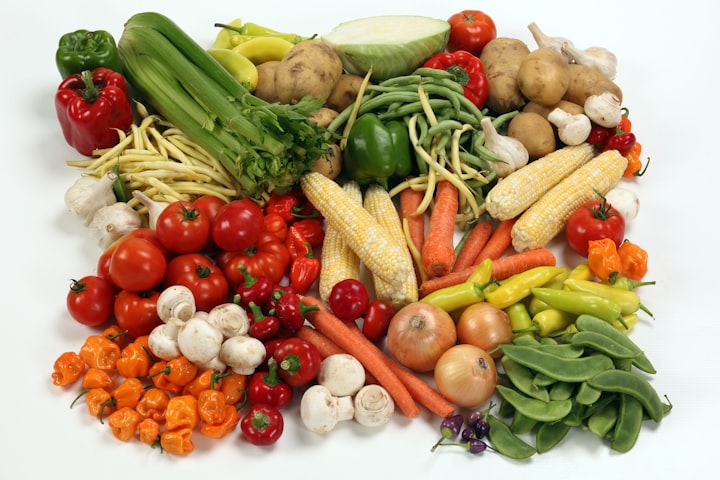Tomatoes Are Easy To Grow
Here's How To Do It
Tomatoes are one of the most popular garden vegetables in America, with at least a quarter of households growing this versatile vegetable…fruit…whatever it is. Let’s say you want to grow your own tomatoes but are unsure. Believe it or not, growing tomatoes is not hard!
Tomatoes are easy to grow as long as you have a sunny spot, nutritious soil, support for the plant, and give it the right amount of water. If you’re interested in growing your own tomatoes, keep reading as we'll address all these steps and more so you can grow your very own delicious tomatoes.
Tomatoes Are One Of The Easiest Vegetables To Grow
Tomatoes are actually very easy to grow, you just need to keep a few things in mind when it comes to growing this prolific plant. They love the heat, so if you live in an area with warm summers and mild winters, you may be able to enjoy fresh bush ripened tomatoes all year long.
Frost will take your tomatoes out, so you should wait to plant them until all danger of frost is gone.
You’ll also have to support your tomato plants. Big, juicy tomatoes are heavy, and they will easily break limbs if they don’t have support. Even cherry and grape tomatoes produce so much fruit on the limbs they can get weighed down.
You’ll need to invest in tomato cages for each plant, or become proficient in staking. These cages can be used year after year, so after the initial investment, you’re good for a while.
Since they grow so quickly, and produce a ton of food, tomato plants may need some fertilizer. It’s easy to add if you create your own compost. You can also purchase bags of compost from your local nursery or home improvement store.
You can use commercial fertilizer, but sometimes they have a bunch of chemicals in them so look for an organic variety if you want to go that route. When choosing a compost or fertilizer, check the three numbers on the front of the bag and look for an even set such as 10-10-10.
These numbers tell you which nutrients are in the fertilizer. The first number is the amount of nitrogen, the second is phosphorus, and the third is potassium, these nutrients are sometimes referred to as NPK. Too much of one or the other will affect how the plant grows. We'll delve into this in the next section.
Do You Need To Add Compost Or Fertilizer?

Tomatoes are known as heavy feeders, but if you have a healthy soil and add rich compost to your soil or on top as a mulch, your tomatoes should be getting all they need. If you add too much fertilizer, the plant will actually suffer, so take a look at the plant to see if you need to add anything.
When you see healthy growth, green leaves, flowers, and eventually tomatoes, you probably don’t have to add any type of fertilizer. As long as you’re getting a good yield, just add some more compost at the end of the growing season to help fortify the soil.
What Too Much Nitrogen Looks Like
When tomato plants get too much nitrogen (N) you’ll get big leafy plants but very little or no vegetables. High nitrogen in tomatoes can also turn the leaves a very dark, nearly blue or purple color.
If the leaves are yellow, it can be a sign of too little nitrogen or insufficient watering, but that also shows wilted leaves.
Tomatoes With Too Much Phosphorus
When the soil has an excess of Phosphorus, you could end up with tomatoes getting blossom end rot. Just like it sounds, the tomatoes will end up rotting from the bottom.
Heavy amounts of phosphorus interfere with calcium absorption and other minerals.
Excess Potassium Can Stunt Plants
Potassium (K or potash) is great for plants, but when too much is added it can stunt the plants. Roots will grow small and slowly, and the plant will remain small and weak. It could also result in yellow leaves. Fruit production is also diminished.
Just like us, we need nutrients to grow and stay healthy, but too much can have adverse effects.
The only way to know for sure about these nutrients in your soil is to have it tested, but unless you are having trouble growing anything, this test is usually a waste of money.
Most times by adding soil amendments, compost, and other organic fertilizers, you’ll have a good, healthy soil.
Now Let’s Plant

Here you have to make a decision, do you plant tomato seeds, or purchase seedlings? Seeds are cheaper, but require more preparation. Seedlings make it easy, but if you’re planting a lot of tomatoes, the cost can add up quick.
You can purchase seeds, or you can even get them from your last tomato you brought home from the store.
To plant tomato seeds, you’ll need to start with a light seed starter mix and some small containers. Be sure to dampen the soil first, otherwise the seeds could float to the top. Squeeze the soil in your fist to test it.
Properly watered seed starting soil will clump together, but not release excess water. Now fill up your seed planter about ¾ full with the soil and tamp it down to remove air bubbles. Lay two to three seeds on the top of the soil and then add about ⅛ of an inch of soil to cover the seeds.
To keep moisture in, and help warm the soil, cover the planted seeds with a plastic tray and check on them every day. Make sure the soil stays moist but not runny wet, and watch for mold.
After the seeds start to sprout, set them outside during warm days in the shade to harden them off. If this step is skipped the stems will get long and soft and you’ll have misshapen tomato plants.
Next snip off the smallest plants and save the largest ones in each of your seed starting cells. You only want one per cell, or they’ll get too crowded.
Once the threat of frost is gone, plant them in your garden, or your container.
Planting Your Seedlings

Once you’ve passed the last frost date, it’s time to plant your tomatoes outside. Be sure to choose a sunny site as tomatoes love, and need plenty of sun. They need at least 6 to 8 hours of full sun.
Here’s an expert tip, when planting tomatoes, drop in a few crushed eggshells before you set the root ball in. Tomatoes, and even pepper plants will benefit from the added calcium that will slowly break down in the soil.
Once outside you’ll need to water your tomatoes regularly. Don’t water them too much or you could end up with root rot. The roots still need to breathe and can’t handle a swamp.
Keep an eye on the soil, and when the dirt is dry an inch or two down, it’s time to water. The best time to water it in the morning, before the heat of the day, and gently water at the soil level to prevent scalding of the leaves and fungal infections.
A drip irrigation hose is a perfect way to water, but if you don’t have one, just use a light, gently spray so the soil doesn't splash up or use a watering can.
You may have to water a few times a week, or every day depending on how hot and dry the season is. Some experts say tomatoes need about an inch or two of water per week to keep them healthy.
Organic mulch is a great way to keep moisture in, and reduce the amount of watering you need to do. Mulch is also a great weed deterrent, and keeps the soil cooler during the summer. Another added benefit of mulch, is it will add nutrients to the soil as it breaks down, so go ahead and add a few inches of a quality mulch.
Support Your Tomato Plants

Support your tomatoes sooner rather than later. Trying to drop a tomato cage over a mature plant is like trying to put a sweater on a feral cat. Someone is going to end up getting hurt.
If you can manage it, place the cage over the tomato plant right after you transplant them. That way you don’t damage the roots, or break limbs on a mature plant.
Whatever tomato plants you have, you’ll need some kind of support. The limbs can handle big, plump tomatoes, especially when they grow several on each limb.
By following all these steps, you’ll be harvesting more tomatoes than you know what to do with in about 2 to 3 months! How exciting is that?
Conclusion
It’s easy to grow tomatoes, but like everything, proper planning is very important. Make sure you have good soil, a sunny spot, support, and water them properly. Compost and mulch are your best friends when it comes to tomatoes, invest in them if you can.
Be sure to water them as needed, and soon you’ll have fresh, vine ripened tomatoes in your house. You can even save the seeds from your tomatoes and plant more next year so you never have to purchase seeds again.
If you have any questions, please comment below!
Bio: I grew up in the mountains of Tennessee and North Carolina where a common past-time was picking apples, wild blueberries, or blackberries, then taking them home to make pies, cobblers or jars of preserves. It’s a tradition I want to pass down to my family. In addition to that, I have always had a fascination with growing plants. It didn’t matter what kind, flowers, trees, fruits, or vegetables, if it came from the ground I wanted to try my hand at growing it. Some of my favorite things to grow are flower bulbs (nearly any kind though daylilies and irises are top of the list here), tomatoes, beans, okra, and squash.
My dream is to one day live as much off the grid and be as self-sufficient as possible. I love growing and preserving my own food as it just seems to taste so much better. When I’m not in the vegetable or flower garden, I’m writing blogs, freelancing, or working on novels.
You can check out more of my random ramblings here on Vocal Media or at
About the Creator
Aaron Thompson
New self published author. If you like these stores please continue to support by sharing with friends, dropping a donation, and checking out my other works at https://www.AMTwriting77.com
on Facebook@AMTwriting77
Enjoyed the story? Support the Creator.
Subscribe for free to receive all their stories in your feed. You could also pledge your support or give them a one-off tip, letting them know you appreciate their work.







Comments
There are no comments for this story
Be the first to respond and start the conversation.